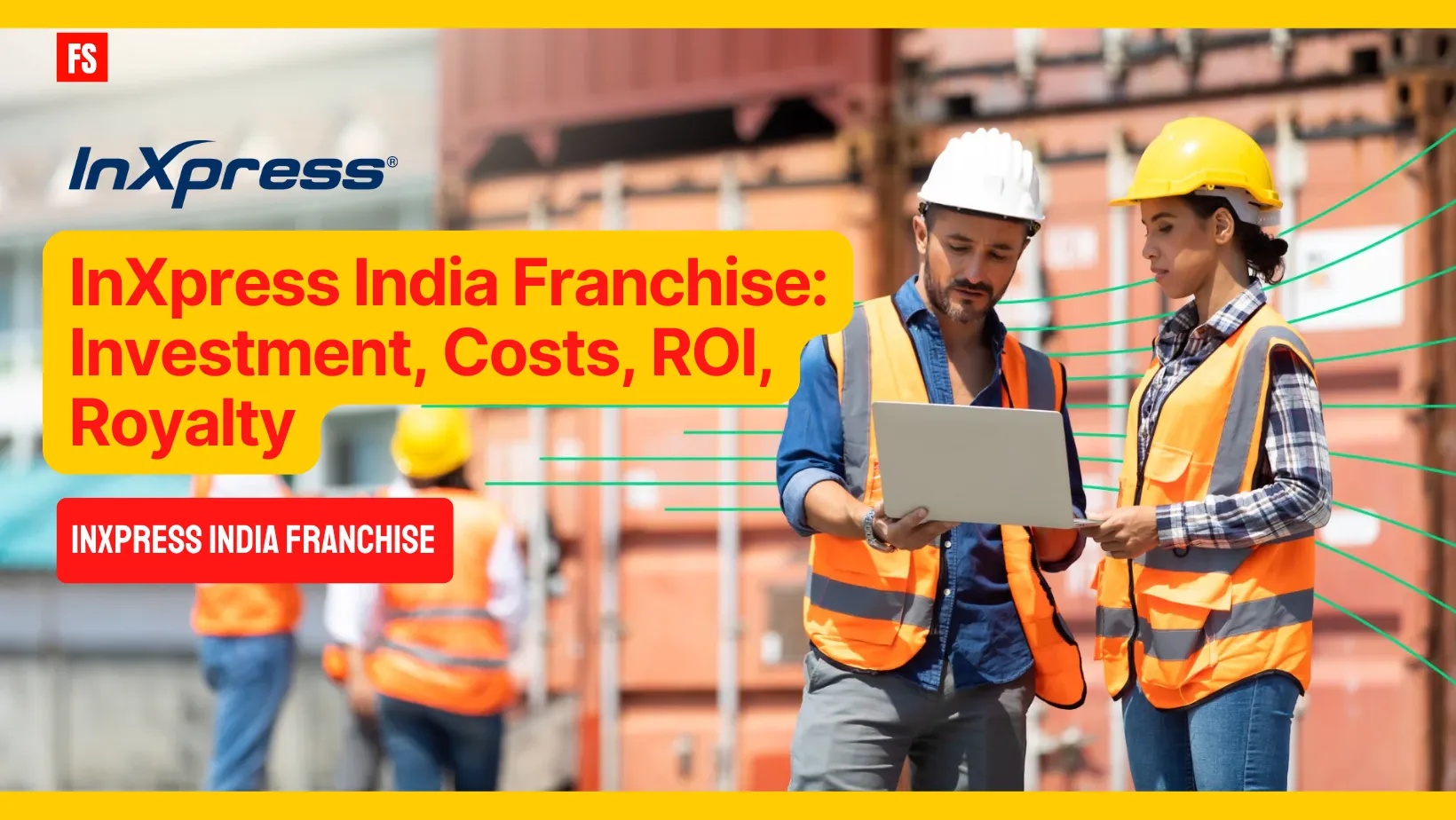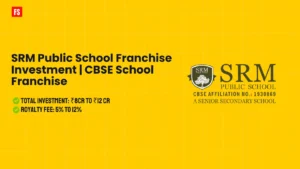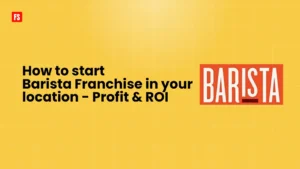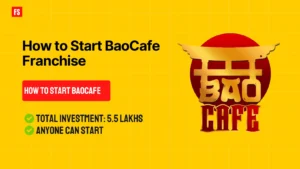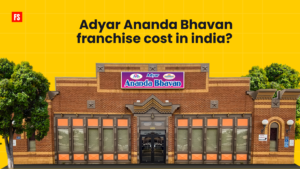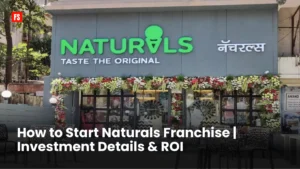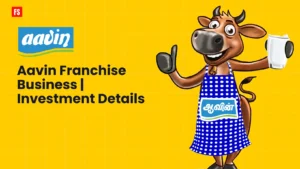If you like interacting with business owners, enjoy sales & relationship building, and want to run a service business that doesn’t require warehousing or large physical inventory, a shipping & logistics franchise can be appealing. InXpress franchise brand promises a franchise model that leverages negotiated carrier rates, an easy-to-use quoting/booking platform, and established brand processes — lowering the barriers for new entrants who lack logistics experience.
This guide will help you evaluate whether the InXpress franchise (with an initial franchise fee of ₹9,00,000 + GST) matches your goals, risk tolerance, and capacity to grow a service business.
Lets explore the Inxpress franchise investment details;
Franchise Brand Details
| Brand Name: InXpress India |
| Founder Name: John Thompson |
| CEO: Mark Taylor |
| Established Year: 1999 |
| Country: United Kingdom |
| Origin: Started in Rochdale, UK, in 1999 |
About InXpress — brand background & global reach
InXpress is an international franchise network focused on shipping and logistics solutions for small and medium enterprises (SMEs). The company aggregates volumes across its global network to secure discounted rates from major carriers and offers a platform (webship+) for quoting, booking, and tracking shipments. A strong part of their pitch is that franchisees can run the business without needing prior logistics expertise because InXpress provides training, sales support materials, and technology.
Key brand attributes often highlighted in their prospectus:
- Global network and volume buying power (helps secure better rates).
- A packaged technology stack for quoting, booking, tracking and reporting.
- Training & ongoing support (new franchise training program + university resources).
- Marketing materials and a proven sales playbook for selling to SMEs.
For many buyers, the brand’s global footprint and established systems reduce the uncertainty common with standalone startups in logistics.
Also Read this: Kag Tiles Franchise Business: Invest in South India No.1 Tile Brand
Why a logistics franchise in India — market opportunity
Several structural trends make logistics attractive in India:
- Ecommerce growth: Continued expansion of online retail — both B2C and B2B — increases demand for reliable courier and parcel services.
- International trade by SMEs: Small exporters, artisans, and manufacturers increasingly ship globally; they need partners who can simplify booking and compliance.
- Fragmented market: Local shipping and freight forwarding is fragmented; a centralized platform plus competitive carrier rates can win customers who prefer convenience.
- Technology adoption: SMEs are comfortable using online dashboards for quotes, tracking and invoices — this aligns with InXpress’s webship+ proposition.
However, opportunity varies by geography: metropolitan and Tier-1/2 cities with dense SME ecosystems offer more customers and volume; smaller towns may have limited export volumes.
The InXpress business model — how it makes money
InXpress’s revenue model (for a franchisee) typically has these components:
- Margin on shipments: Franchisees sell shipping services to customers at a price that includes a margin over the negotiated carrier cost. The margin per shipment can be fixed or percentage-based depending on the service and carrier agreement.
- Recurring revenue from contracts: Business customers who ship regularly provide recurring income streams.
- Value-added services: Customs documentation support, packaging advice, insurance and premium services can generate incremental fees.
- Volume-based growth: As shipment volumes rise, franchisees may secure better internal margins, sell more value-added services, and scale operations efficiently.
For the franchisor, income comes from the initial franchise fee and any ongoing royalties/fees (if applicable), plus strengthening the global network to negotiate carrier rates.
Also Read this: Mother Dairy Safal Franchise – Investment, Process & FAQ Guide
Franchise cost breakdown
From the prospectus you provided, the listed initial franchise fee is:
- Franchise Fee: ₹9,00,000 + GST (one-time)
Beyond this, realistic initial and early costs to budget for include:
A. Pre-launch & one-time setup
- Legal & franchise agreement review (lawyer fees) — ₹20,000–₹80,000 (estimate).
- Local business registrations (GST registration, shops & establishment, etc.) — ₹5,000–₹25,000.
- Small office setup (furniture, PC, printer/scanner) — ₹50,000–₹2,00,000 depending on scale.
- Branding & signage, initial marketing materials — ₹25,000–₹1,00,000.
- Website / landing page & local digital setup — ₹15,000–₹75,000.
B. Recommended working capital & personal buffer
- The prospectus recommends budgeting to cover roughly 18 months of living expenses while you build the business. That’s because early months may have low cash flow.
- Example: If your living + running expenses are ₹50,000/month, 18 months = ₹9,00,000. (This is illustrative; use your actual monthly burn.)
C. Recurring and operating costs
- Rent & utilities (if you have an office) — ₹15,000–₹60,000/month depending on city and location.
- Staff salaries (1–2 people initially) — ₹20,000–₹60,000/month.
- Marketing & customer acquisition (digital ads, local outreach) — ₹10,000–₹50,000/month initially.
- Software/platform fees, payment gateway, telecom — ₹5,000–₹20,000/month.
- Miscellaneous (travel to clients, courier samples, etc.) — variable.
D. Potential hidden costs
- Deposit/credit requirements with local carriers (if any) — check with InXpress and carriers.
- Additional training trips or franchise conferences (travel & lodging).
- Local licensing for export documentation services (if you provide customs clearing, etc.).
Bottom line: Initial hard cost = ₹9,00,000 + GST (franchise fee) + setup costs (₹1.5–3.5 lakh typical) + recommended working capital (varies — prospectus suggests a comfortable buffer for 12–18 months). Realistically, plan for ₹15–25 lakh total budget (franchise fee + setup + 12–18 months buffer) depending on personal cost of living and office choices.
Also Read this: Top 50 Franchise business opportunity in India 2024
Realistic earnings & ROI scenarios (worked examples)
Any projection contains assumptions. Below are three scenario templates (conservative, moderate, aggressive) to show how payback might look. These use simplified, transparent math so you can plug in your own numbers.
Assumptions we’ll use (example)
- Average gross margin per shipment (after carrier cost): ₹500. (This is hypothetical — margins vary by service & volume.)
- Average number of shipments per month (varies by year and territory).
- Monthly fixed costs (rent, salaries, utilities, marketing): ₹80,000.
- Initial total investment to recover: ₹12,00,000 (franchise fee ₹9,00,000 + initial setup ₹3,00,000). Use your own figure.
Important: These numbers are illustrative. Replace them with real margins and fixed costs from your market due diligence.
Scenario A — Conservative (slow ramp)
- Month 1–6: 40 shipments/month
- Month 7–12: 100 shipments/month
- Month 13 onwards: 180 shipments/month
Monthly contribution (profit before fixed costs) = shipments × margin.
- Months 1–6: 40 × ₹500 = ₹20,000
- Months 7–12: 100 × ₹500 = ₹50,000
- Month 13+: 180 × ₹500 = ₹90,000
Profit after fixed costs (₹80,000/month):
- Months 1–6: ₹20,000 − ₹80,000 = −₹60,000 (loss)
- Months 7–12: ₹50,000 − ₹80,000 = −₹30,000 (loss)
- Month 13+: ₹90,000 − ₹80,000 = ₹10,000 (profit)
Cumulative cashflow to recover initial ₹12,00,000:
- After 12 months: sum of losses = (6×−60,000) + (6×−30,000) = −₹5,40,000
- Post month 13, monthly net = ₹10,000 → to recover remaining ₹12,00,000 + 5,40,000 = ₹17,40,000 at ₹10,000/month takes 174 months (~14.5 years) — not acceptable.
This shows: with low margins and slow ramp, payback can be years/decades — meaning you must improve margins, volume, or reduce fixed costs.
Scenario B — Moderate (reasonable ramp)
- Month 1–6: 60 shipments/month → 60×₹500 = ₹30,000
- Month 7–12: 160 shipments/month → 160×₹500 = ₹80,000
- Month 13+: 320 shipments/month → 320×₹500 = ₹1,60,000
Profit after fixed costs (₹80,000):
- Months 1–6: −₹50,000
- Months 7–12: ₹0 (break-even)
- Month 13+: ₹80,000 profit
Cumulative cashflow:
- After 12 months losses = 6×(−50,000) + 6×0 = −₹3,00,000
- From month 13 onwards: ₹80,000/month → to recover ₹12,00,000 + 3,00,000 = ₹15,00,000 → 15,00,000 / 80,000 = 18.75 months → approx 19 months.
So in this moderate scenario, payback ≈ ~31–32 months (12 months ramp + 19 months) — plausible with good sales & retention.
Scenario C — Aggressive (high volume, strong sales)
- Month 1–6: 120 shipments/month → ₹60,000
- Month 7–12: 300 shipments/month → ₹1,50,000
- Month 13+: 600 shipments/month → ₹3,00,000
Profit after fixed costs (₹80,000):
- Months 1–6: −₹20,000
- Months 7–12: ₹70,000
- Month 13+: ₹2,20,000
Cumulative cashflow:
- After 12 months: 6×(−20,000) + 6×70,000 = −120,000 + 420,000 = ₹3,00,000 positive
- So by end of year 1 you’re already ₹3,00,000 ahead. To recover the initial ₹12,00,000 you need additional ₹9,00,000 at ₹2,20,000/month → ~4.1 months. So total payback ≈ ~16 months.
This scenario is optimistic and depends on aggressive client acquisition and large repeat volumes.
Key takeaways from scenarios
- Margins and volume are crucial. Small increases in average margin or shipments have outsized effect on payback.
- Reduce fixed costs early (work from home / shared office, lean staff) to improve breakeven.
- Hunt for high-volume clients (exporters, ecommerce sellers) who provide predictable recurring shipments.
- Cross-sell value-added services to increase average margin per customer.
Training, technology & support provided by InXpress Franchise
Prospective franchisees can expect the following (as per the prospectus):
- Initial training program — typically a two-week onboarding course covering sales, operations, use of webship+ platform, and customer service.
- Online learning resources — a “franchise university” or knowledge base for ongoing training.
- Technology — webship+ (booking, quoting, tracking, reporting) to manage customer shipments efficiently.
- Marketing templates & sales collateral — brochures, slide decks, email templates, and local marketing guidance.
- Mentoring & ongoing support — assigned support contacts or regional managers to help with business development and operational issues.
The actual quality of support matters — confirm the depth of local Indian market training, availability of local account managers, and SLAs for platform uptime.
What InXpress expects from its franchisees (skills & time commitment)
While no logistics background is required per the prospectus, InXpress lists a set of desirable attributes:
- Sales & networking skills: building relationships with SMEs, negotiating, and converting leads.
- Customer service orientation: solving shipping problems and managing expectations.
- Operational discipline: accurate quoting, paperwork for international shipments, and timely follow-ups.
- Business development drive: outreach, partnerships, and local marketing.
- Time commitment: early months will demand full-time effort; expect involvement in sales, onboarding customers, and handling initial operations personally or with a small team.
If you’re a hands-off investor expecting immediate passive returns, this model may not fit — early involvement is critical.
Also Read this: 50+ Business Ideas for Women in India 2024
Pros & Cons of InXpress Franchise
Pros — Why InXpress might be a good fit
- Established global brand & network — credibility when approaching clients.
- Technology stack (webship+) saves time and reduces errors in quoting/booking.
- Access to negotiated carrier rates that small businesses alone may not secure.
- Recurring revenue potential from repeat shipping customers.
- No heavy inventory or warehousing required — lower capital intensity compared to product retail franchises.
- Structured training and marketing support for new franchisees.
Cons & Risks — What to watch out for
- High upfront franchise fee (₹9,00,000 + GST) — significant capital outlay.
- Potentially long ramp-up period — prospectus suggests budgeting for 12–18 months of personal expenses.
- Margin pressure from carriers & competition — carriers can change pricing, and competition may undercut you.
- Dependency on carrier partners for rates and service quality.
- Territorial overlap risk — verify exclusivity in your territory.
- Ongoing fees & obligations — confirm any royalties, mandatory marketing contributions, or software fees.
- Market variability — shipping demand can be seasonal or impacted by macro events (fuel price, customs rules, geopolitical events).
Territory, competition & local adaptation considerations
Before signing, verify:
- Exclusivity / territory rights: Does InXpress guarantee that no other InXpress will operate in your city or specific radius? If not, competing franchisees may cannibalize business.
- Local carrier relationships: Which carriers does InXpress work with in India (domestic couriers, air freight providers, courier aggregators)? Are the carrier contracts localised?
- Language & local process adaptation: Will training and documentation be available in local languages if needed? Are platform features adapted to Indian GST and e-invoice workflows?
- Competitors: Local freight forwarders, courier companies, and other franchise networks can compete. Be prepared with a strong local marketing and relationship strategy.
Legal, fees & ongoing costs you must verify before signing
Ask for specifics and demand answers in writing:
- Full franchise agreement: Ask a lawyer to review for term length, renewal clauses, termination conditions, non-compete terms, and dispute resolution.
- Ongoing royalties / fees: Is there a monthly royalty or percentage of revenue payable? Any mandatory marketing fund contributions?
- Software licensing & platform fees: Are there additional fees to access webship+ beyond the franchise fee?
- Carrier bonds or credit requirements: Do carriers require deposits or credit lines?
- Support commitments: What SLAs exist for training refreshers, platform support, or local marketing support?
- Territory exclusivity: Exact wording and any exceptions.
Also Read this: Best Bao Franchise Business in India 2025
Step-by-step process to apply and launch your franchise
Here’s a practical checklist to take you from initial interest to launch.
Step 1 — Initial enquiry & brochure review
- Download the latest prospectus and any updated fee sheets. Ask for the most recent franchise disclosure document (FDD) or equivalent.
Step 2 — Preliminary call / presentation
- Get a detailed demo of the webship+ platform and ask to speak to an operations manager.
Step 3 — Speak to existing franchisees
- Ask for contact details of current Indian franchisees. Ask them about actual ramp timelines, support quality, earnings, and hidden costs.
Step 4 — Financial due diligence
- Prepare a 12–24 month cashflow plan (realistic projections). Include personal living expenses, marketing budget, and a pessimistic scenario.
Step 5 — Legal review
- Hire a franchise lawyer to review the agreement for obligations, termination clauses, non-compete wording, territory, and liability.
Step 6 — Secure funding
- Arrange the franchise fee, working capital, and initial marketing budget. Consider an overdraft or small business loan if needed.
Step 7 — Sign & on-board
- Complete paperwork, pay fees, and start the initial training program. Request a written onboarding timeline.
Step 8 — Setup & local launch
- Set up your office (even a lean remote office works initially), register business, get a local website/landing page, and start marketing to SMEs.
Step 9 — Sales push & relationship building
- Run outbound campaigns, network with local export associations, influencers, and ecommerce sellers. Offer discounted trial shipments for the first clients.
Step 10 — Optimize & scale
- Monitor margins by customer; focus on high-frequency shippers and expand with targeted sales hires or partnerships.
Growth levers — how to scale your InXpress franchise
- Target high-volume verticals: exporters, manufacturers, ecommerce sellers, subscription product businesses.
- Partnerships: tie up with local packaging providers, ecommerce consultants, and export promotion councils.
- Upsell value-added services: packaging, cargo insurance, customs documentation help, and expedited services.
- Referrals & channel sales: incentivize existing customers and local accountants/bookkeeping firms to refer clients.
- Digital presence & content: create helpful content for SMEs on shipping rules, customs, and best practices, which positions you as a trust partner.
Also Read this: Zudio Franchise Cost, Fees and Profit in India 2024
InXpress Franchise Recommended due diligence checklist (documents & questions)
Ask the franchisor for:
- Latest franchise disclosure or equivalent.
- Full fee schedule — initial & ongoing.
- Sample franchise agreement (redline with financial obligations).
- List of current Indian franchisees + references.
- Carrier partner list & any local contracts.
- Detailed technology roadmap and training schedules.
- Territory map and exclusivity clauses.
- Sample P&L of a typical unit (real numbers if available).
Ask yourself & verify:
- Who are your top 10 prospective clients in the first 6 months?
- What is your personal breakeven monthly revenue?
- Do you have the sales network to reach exporters & ecommerce sellers?
- How much personal savings/worst-case funding can you allocate for 12–18 months?
Conclusion — is InXpress right for you?
InXpress offers a packaged franchise solution for entrepreneurs who want to serve the logistics needs of SMEs without building their own carrier agreements from scratch. The pros: a global brand, technology platform, and training. The cons: a sizeable initial fee (₹9,00,000 + GST), the need for real sales effort, and variable time to profitability depending on margins and local demand.
If you:
- enjoy sales and relationship building,
- can budget for 12–18 months of ramp, and
- are comfortable executing a local marketing & outreach plan,
then InXpress could be a promising opportunity — especially in metro or Tier-1/2 cities with healthy SME exporters and ecommerce sellers. But do your homework: validate territory exclusivity, ask for real unit economics from existing Indian franchisees, and have a conservative cash buffer.
Frequently Asked Questions (FAQs) – InXpress Franchise
The franchise fee listed in the prospectus is ₹9,00,000 + GST. You must also budget for office setup, legal fees, marketing, and recommended personal working capital (prospectus suggests enough to cover ~12–18 months of living costs). A realistic total budget could range from ₹15–25 lakh depending on your choices.
Break-even depends on margins, volume and fixed costs. Conservative scenarios may take multiple years; a moderate, well-executed plan could achieve payback in ~24–36 months. Aggressive growth with high volumes could shorten this to 12–18 months.
No prior logistics experience is required. InXpress provides initial training and ongoing support. However, sales, customer service and business development skills are essential.
Territory rights differ by franchisor agreement. You must confirm exclusivity terms in writing before signing — do not assume automatic exclusivity.
Focus on acquiring recurring, high-volume customers; control fixed costs early; upsell value-added services; and maintain excellent customer service to reduce churn.

